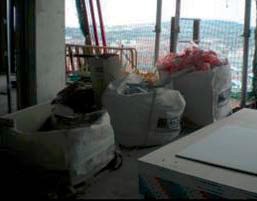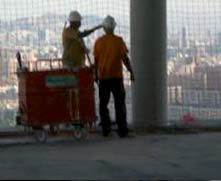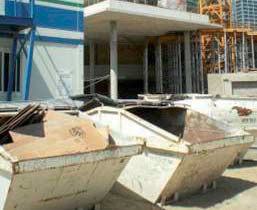Portafira towers
Description of the Environmental Measure
Problem detected:
Solutions adopted:
In order to optimize the environmental and economic costs and avoid poor C&D waste management, each building was inspected and the subcontractors were informed of any cases of waste mismanagement (misclassifi cation of waste or untidiness on site) by means of incident reports.
A ranked list of the subcontractors for each of the buildings (offi ce and hotel) was drawn up monthly, specifying the subcontractors that had failed to meet the standard level of C&D waste classifi cation and tidiness, the subcontractors that had remained within the minimum required levels and those that had maintained good standard. In addition, meetings were held at least once per month to keep contractors abreast of the results of their waste management and correct any deviations found. At these meetings, subcontractors were reminded of the general rules about construction waste classifi cation and cleaning.
We also conduct training, communication and resource management activities with new subcontractors to familiarize them in advance with the waste management and site orderliness and tidiness rules, the inspection procedure, the means of waste disposal and the consequences of failure to comply with the procedure.
Results:
Thanks to these actions, the following C&D waste was correctly sorted and managed: rubble, paper/cardboard, wood, scrap metal, plastic fi lm, dirty rubble, plasterboard and glass. A specialized waste management company provided monthly fi gures on the weight and volume of waste managed.
The fact that each subcontractor took pains to classify and collect all or part of its waste not only had clear associated benefi ts for the environment, but also represented a considerable economic saving in waste management and clean-up squads and reduced the proportional amount of time spent on these tasks by the project’s nonconstruction personnel. The resulting monthly saving averaged 30,000 euro.











